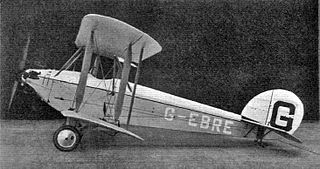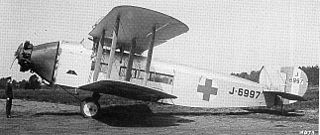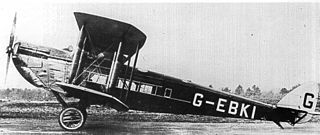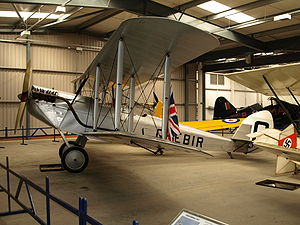
The de Havilland DH.60 Moth is a 1920s British two-seat touring and training aircraft that was developed into a series of aircraft by the de Havilland Aircraft Company.

The DH.83 Fox Moth was a successful small biplane passenger aircraft from the 1930s powered by a single de Havilland Gipsy Major I inline inverted engine, manufactured by the de Havilland Aircraft Company.

The de Havilland DH.53 Humming Bird is a British light aircraft of the 1920s.

The de Havilland DH.50 was a 1920s British large single-engined biplane transport built by de Havilland at Stag Lane Aerodrome, Edgware, and licence-built in Australia, Belgium, and Czechoslovakia.

The de Havilland DH.65 Hound was a 1920s British two-seat day bomber built by de Havilland at Stag Lane Aerodrome.

The Airco DH.16 was a British four-seat commercial biplane of the 1910s designed by Geoffrey de Havilland, the chief designer at Airco.

The de Havilland DH.29 Doncaster was a British long-range monoplane of the 1920s built by de Havilland.

The de Havilland DH.34 was a single engined British biplane airliner built by the de Havilland Aircraft Company in the 1920s. 12 were built, with the DH.34 serving with Imperial Airways and its predecessors for several years.

The Blackburn L.1 Bluebird was a British single-engine biplane light trainer/tourer with side-by-side seating, built in small numbers by Blackburn Aircraft in the 1920s.

The Blackburn Bluebird IV was a single-engine biplane light trainer/tourer biplane with side-by-side seating designed by Blackburn Aircraft. It was an all-metal development of the wooden Blackburn Bluebird I, II and III aircraft.

The Blackburn B-2 was a British biplane side-by-side trainer aircraft of the 1930s. Designed and built by Blackburn Aircraft, 42 were built.

The Bristol Ten-seater and Bristol Brandon were British single-engine biplane transport aircraft built by the Bristol Aeroplane Company in the early 1920s. Only three were built, two of which were used as civil transports and one of which served with the Royal Air Force.

The de Havilland DH.75 Hawk Moth was a 1920s British four-seat cabin monoplane built by de Havilland at Stag Lane Aerodrome, Edgware.

The de Havilland DH.71 Tiger Moth was a British single-seat monoplane, designed to research high-speed flight and to test replacement engines for the Cirrus. Only two were built.

The Miles M.7 Nighthawk was a 1930s British training and communications monoplane designed by Miles Aircraft Limited.

The ADC Cirrus is a series of British aero engines manufactured using surplus Renault parts by the Aircraft Disposal Company (ADC) in the 1920s.
The de Havilland DH.92 Dolphin was a 1930s British prototype light biplane airliner designed and built by the de Havilland aircraft company.

The de Havilland DH.54 Highclere was a single-engined 15-passenger biplane airliner designed to replace the DH.34. Its development ended when Imperial Airways decided to use only multi-engined types.

The ADC Airdisco is a British V-8 aero engine that first ran in 1925.
The Dudley Watt D.W.2 was a 1930s British two-seat light biplane designed by K.N. Pearson for Dudley Watt. The D.W.2 was built at Brooklands and was a wood and fabric biplane with a tailskid landing gear. It had two open cockpits and was powered by a 90 hp (67 kW) ADC Cirrus III piston engine.


















